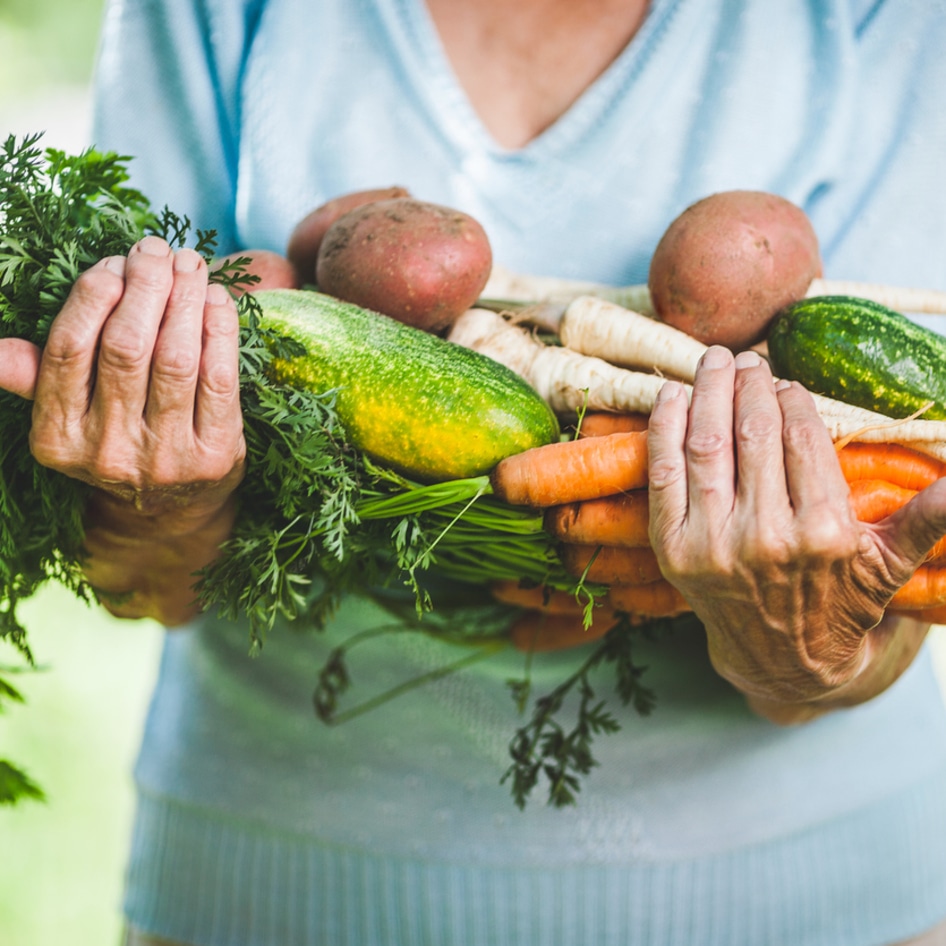When it comes to diet, younger generations like Generation Z and Millennials often get credit for making the healthiest choices. Studies show that most young people consider the health benefits of food when deciding what to eat. In a 2023 study from Texas Health, researchers found that 80 percent of Millennials choose foods based on health benefits, compared with around 64 percent of Baby Boomers, born between 1946 and 1964.
 Adobe
Adobe
But despite this, Boomers do know a thing or two about healthy eating habits. They grew up when processed snacks and fast food were becoming more popular; but they were also raised in a post-rationing society, when smaller portions and more vegetables were the norm, and ultra-processed foods (UPFs) were a rarity. So could we learn anything from the way Boomers grew up eating?
What did Boomers eat growing up?
Food options were often simpler and far less processed in the 1950s. Canned vegetables like corn and green beans were staples for most families, alongside baked potatoes, which research shows are some of the healthiest carbohydrates we can eat.
Many in the West also ate smaller amounts of butter and sugar due to the lingering effects of World War II. In the US, sugar rationing ended in 1947, but people’s mindsets and habits took longer to change. In the UK, rationing continued throughout the 1950s.
“Diets were generally healthier than today, with people eating more vegetables and milk, and far less fat and sugar,” Katherine Howells, PhD, of The National Archives in the UK, told Metro. “People were more aware of the importance of seasonal produce, having been involved in growing vegetables during the war.”
 Pexels
Pexels
That said, meat was a favorite for the Boomer generation. But again, the way it was eaten was different. “A serving of meat would have been about 100 grams, and the lion’s share would have gone to the man of the house, leaving a wife like me with even less,” noted Telegraph editor Lucy Denyer, who tested a UK 1960s diet for one week in July. “My 1.5-kilogram cut of beef turned into three meals for our family of four.”
Back then, fast food was also generally seen as an occasional treat rather than everyday sustenance. Today, more than 36 percent of American adults eat fast food on any given day, whereas in the 1950s and 1960s, home-cooked meals were far more common.
“In the 1950s, people ate food made at home,” notes the healthcare system Franciscan Health. “Fast foods, pizza delivery, and take out were not the norm until about the mid-1980s—a dining shift that caused American obesity rates to begin rising.”
It’s worth noting that even when people did eat fast food back in the 1950s and 1960s, it was healthier than it is today. In 2019, one study looked at the evolution of the industry over the past three decades and suggested that the further back you go, the healthier the menu gets.
“Despite the vast number of choices offered at fast-food restaurants, some of which are healthier than others, the calories, portion sizes, and sodium content overall have worsened (increased) over time and remain high,” lead investigator Megan A. McCrory, PhD, from the Department of Health Sciences at Boston University told Forbes.
 Pexels
Pexels
How to eat like a Boomer today: keep it simple and cook from scratch when possible
There are lessons to learn from Boomer diets. Research shows that keeping our plates filled with whole and natural ingredients—even from a can, like sweetcorn or peas—is far better for our health than relying on UPFs.
Today, research suggests that the average Brit gets around 57 percent of their calories from UPFs, while the average American gets more than 60 percent. Diets high in UPFs have been linked with an increased risk of chronic diseases, including type 2 diabetes, heart disease, and some forms of cancer.
Research also suggests that cooking from home is far healthier than eating out. A 2014 Johns Hopkins study found that people who eat more meals at home consume less sugar and less saturated fat. Another recent study from the UK found that more than 75 percent of bestselling takeout dishes are unhealthy due to their large amounts of salt, fat, and sugar, further making the case for cooking at home like Boomers.
![]()
Charity Morgan
A lot has changed since Boomers were young. Back then, it was far more common for many women to stay at home instead of work, giving them more time to cook from scratch. Today, it’s often tougher to find the time. However, incorporating more home-cooked meals into a busy schedule can be achieved through meal prepping or batch cooking (find our guide to batch-cooking meals here). There are also meal delivery services that specialize in healthy plant-based meals, like Purple Carrot, for example.
There are ways we can improve on the Boomer diet, too. Studies show that eliminating or significantly reducing meat and eating predominantly plant-based whole foods is one of the best ways to eat for our health (find out more about the health benefits here).
For further evidence of this, just look to the Blue Zones: areas of the world where many members of The Silent Generation, the generation before Boomers, are enjoying their old age with minimal health problems. Their diets? Mostly plant-based whole foods.
For more plant-based stories like this, read:
JUMP TO ... Latest News | Recipes | Guides | Health | Subscribe









